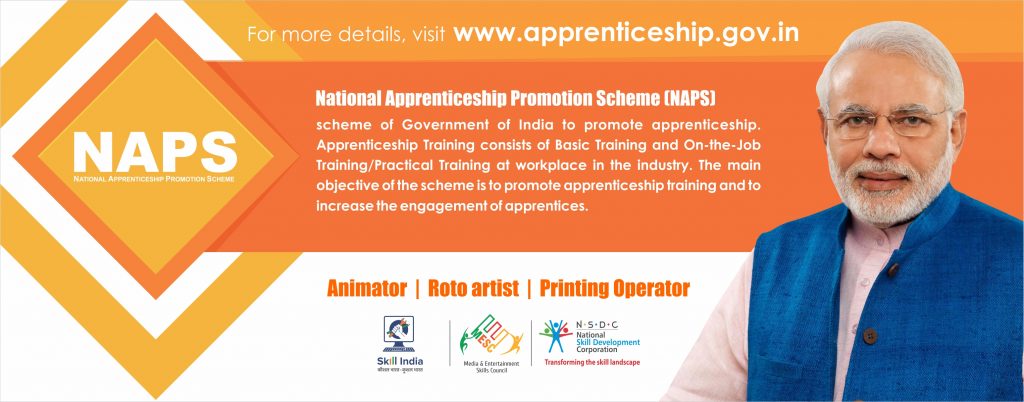The year 2015 saw the National Policy for Skill Development and Entrepreneurship heralding in landmark skilling initiatives in a significant push to spur economic gains through skilling, upskilling and re-skilling.
Buoyant ambition to impart skills training to 400 million people by 2022 saw the spawning of around 30 schemes under some 16 Central Ministries- all charged with making Indian youth more relevant to the labour market to curb the scourge of the ‘no skills-not employable’ malaise.
However, good intentions aside, the estimates state that a third of Indian youth have slipped through the cracks falling flat into the Not in Employment, Education or Training (NEET) category. The 2016-17 Annual Report of the Ministry of Skill Development and Entrepreneurship (MSDE) estimated a skills training need of 126.87 million between 2017-2022 with an incremental human capital requirement of 103.4 million for the same period.
What does the future hold for India’s burgeoning youth with a median age of 28 who will make up 34% of the country’s population by 2020? How well have the country’s skilling schemes fared in building a skills-based economy?
The Start of a New Apprenticeship Era
At best 0.1-0.2% of India’s organised workforce is made up of apprentices as against 5% in Germany- a model nation for how apprenticeships form the bedrock of its industrial prowess. In 2016 the National Apprenticeship Promotion Scheme (NAPS) was launched as a potential game-changer to skill Indian youth.


The intent was clear – train youth with employable skills outside of a traditional theory-heavy classroom environment. Apprentices would receive trade and soft skills experiences in actual workplaces learning on-the-job. The fundamental premise was to close the fast widening dichotomy between meaningless degrees and the real world of work. An alarming proportion of Indian youth simply did not have the required skills that employers desired, after grinding through years of a higher education that had become increasingly archaic and out-of-touch with a fit for purpose skills. Youth faced a bleak future even as they continued to spill out of the vast network of India’s higher education system – the third-largest in the world.
Thus, birthed the NAPS with a promise to make Indian youth (apprentices) foot soldiers in a push to furrow new paths to skills-based jobs, stronger partnerships with the private sector to promote apprenticeships, the ultimate aim being to make youth work-ready. A target was set to train 50 lakh apprentices by 2020. ‘Employability’ became the new mantra.
Where are we now?
Up until mid-2018, estimates reported that of the 71 million enterprises comprising India Inc, some 50,000 of them engaged with apprenticeships (NAPS and non-NAPS). An RTI query filed specifically on the NAPS to the MSDE in June 2018 brought to light that a mere 7,358 companies had registered under the NAPS.
Size-wise too, apprenticeship schemes are dwarfed by other flagship skilling initiatives (the Pradhan Mantri Kaushal Vikas Yojana (PMKVY) for instance, which we will be examining in our next blog). The budget for ‘Apprenticeship and Training’ in 2018-19 was approximately 746 crores, surprisingly down from Rs. 1151.40 crores allocated in 2017-18. The reasons for downsizing the scheme are not clear given its importance in the MSDE’s skilling agenda. The PMKVY, on the other hand, commands a kitty of Rs.12000 crores for the period 2016-20.
How far along are we to reach the 50 lakh apprentices target by 2020? A July 2019 PIB press release reports 3.78 lakh, 4.00 lakh, and 4.45 lakh candidates were imparted apprenticeship training during 2016-17, 2017-18 and 2018-19 respectively- a cumulative total of 14.45 lakh candidates or 28.9% on target.
Slow but Steady
The Indian apprenticeship landscape has seen a raft of commendable changes over time. The Apprentice Act (1961) formerly accused of being draconian has been amended four times. The 2014 amendment to the Act became the bellwether to a new industry-friendly and simplified apprenticeship sentiment with more power shifted to employers. The more recent changes in September 2019 further augurs well for boosting apprenticeships. From increasing the percentage of apprentices to 15% of an organisation’s total workforce (up from 2.5%-10%), to doubling of stipends, we get a sense that the regular re-wiring of apprenticeship rules and regulation are clear signals of strong intent to anchor apprenticeships at the heart of employer-led skills training and job creation. The country is slowly but surely waking up to the earning-while-learning apprenticeship model as a comprehensive solution to the current skilling crisis.
Read The Latest in Policy and Regulation in Apprenticeships and Skills – Part I and Part II
Apprenticeship Outlook
A recent one-of-its-kind study by TeamLease Services and the National Employability Through Apprenticeship Programme further builds on the positivity when it found that overall 41% of employers surveyed expressed willingness to hire apprentices in 2019.
Why the New Apprenticeship Outlook and Index is a Must Read
Under the NAPS, engagement of trade apprentices has shown an 8% growth between 2014-15 and 2016-17. And the private sector is charging ahead with 43% of the surveyed companies engaging trade apprentices.
Opportunity in Services
We believe the future of the NAPS is bright, notwithstanding current challenges. And it’s not just in manufacturing. The study also showed that an impressive 42% employers in the services sector were willing to hire apprentices between July-December 2019, with Retail (45%) and Travel & Hospitality (44%) the top sectors.
Sumit Kumar, vice president, NETAP, TeamLease Skills University has further called out for increased apprentice hiring in services. “The services sector has started showing keen interest. The IT sector, which is one of the largest employers, also must come forward,” states Sumit.
A sentiment shared by Skills Development Ministry Mahendra Nath Pandey who recently pressed upon PSUs to up apprentice hiring in services. The top 100 PSUs nationwide currently use up 66% of the apprenticeship space but predominantly in manufacturing and technical roles.
Read Why the Service Sector Matters for Vocational Training and Apprenticeships
Next Time
We will be looking at how the Pradhan Mantri Kaushal Vikas Yojana (PMKVY) is shaping up – another highly pertinent bottom-up skills training scheme in size and reach with the potential to make a marked difference to the country’s fight against a severe paucity in employable skills.














